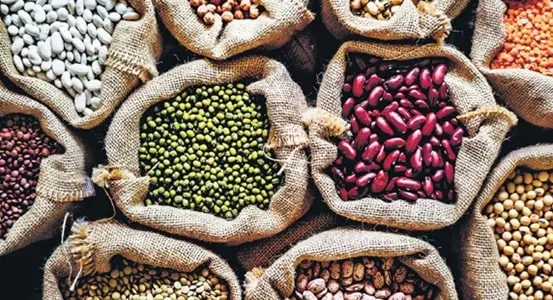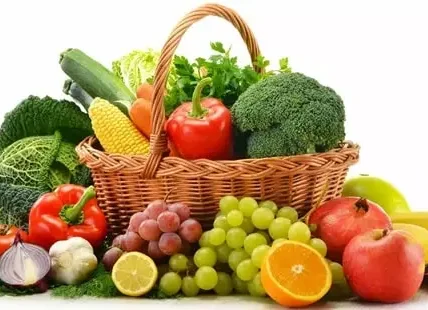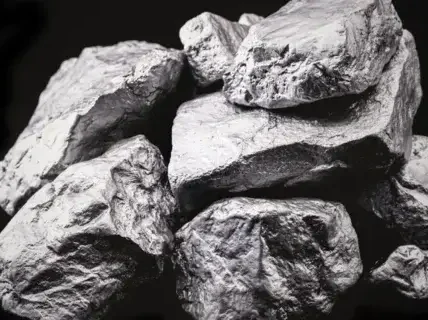So, pulses, right? Well, who doesn’t know about these tiny but mighty superfoods? Loaded with proteins, fibers, vitamins, and a whole lot of minerals, they are pretty much ruling the nutrition world. And let’s be real, you’ve probably munched on them more times than you can count, right? From the cozy corners of Indian and Pakistani homes to the bustling streets of China, Egypt, and even the UK, pulses have been a big deal in kitchens for as long as anyone can remember. But yeah, pulses are not just good for you, they’re good for our planet too! Compare them to other crops, and you’ll see they’re practically the low-maintenance ones in the farming scene. In simple words, pulses are winning not just on our plates but for the planet too. And yes, given the crazy demand for these nutritional powerhouses in just about every country, we’re diving into the who’s who of pulse production today. That’s right, we’re talking about the top 10 largest producers of pulses in the world as of 2024. Ready to roll into the world of pulses and see who’s nailing it this year? Here we go.
Countries With Highest Pulses Production
1. India
You see, when you think of pulses, India just pops up, right? I mean, it’s no surprise because no other country even comes close to India in both producing and munching on these pulses. Get this, in the past two decades, India didn’t just increase its pulse production, it more than doubled it! The lowest we went was back in 2002, hitting around 13.37 million metric tonnes. But now, hold your breath, because in this financial year, we’re talking a massive leap to 27.81 million metric tonnes in the last fiscal year aka 2023. That’s huge!
2. Myanmar
Now, moving on to Myanmar. In 2020-21, Myanmar was all about exporting these pulses, sending out over 2 million tonnes. But wait till you hear about their total production. Despite being a relatively smaller player, Myanmar packed a punch with a production of over 7 million metric tonnes of pulses in 2021. And guess what? For 2023, the word on the street is they’re aiming to hit between 7.4 and 7.5 million tonnes. Talk about punching above their weight!
3. Canada
And then there’s Canada. Just a decade back, they were kind of a small player in the pulse world, barely scratching the 2 million tonnes mark. Back in 2011, it was just about 1.5 million metric tonnes. But yeah, Canadians love their pulses, so the farmers got busy. They ramped up production like crazy, and now, Canada’s sitting pretty as the world’s third-largest pulse producer. Why the sudden boom though? Well, it’s all thanks to the growing buzz around sustainable foods, both among farmers and the everyday folks. Last year? A whopping 6.7 million metric tonnes of pulses were produced! And at this rate, don’t be surprised if Canada overtakes Myanmar in the next five years, sliding into the second spot.
4. China
Now, let’s talk about China. Back in the swinging ’60s, China was sitting pretty as the world’s second-largest pulse producer. But guess what? A combo of shrinking harvest areas, skyrocketing pulse prices, and some really uncool weather played spoiler. Fast forward to the past two decades, and it’s a whole different story. China’s been churning out pulses steady as a rock, hitting numbers between 4 and 5 million tonnes each year you know? And just last year, in 2021, they went all out, producing a whopping 4.67 million tonnes. Yeah, you heard it right, 4.67 million!
5. Nigeria
Rewind to 2011-12, Nigeria was riding high as the world’s fourth-largest pulse producer, with a jaw-dropping 5.3 million tonnes. But hold on, things took a bit of a tumble, and by 2022, they’re down to just 3.26 million metric tonnes. Ouch! But don’t count them out yet. There’s this buzz that Nigeria might just up their production and land acreage for grain cultivation in the near future. A big chunk of their pulse production heads overseas, fattening up the nation’s wallet and giving the GDP a nice little boost.
6. Niger
Now, here’s a twist. Niger, Nigeria’s next-door neighbor, isn’t lagging far behind in the pulse race. Last year’s stats show Niger pumped out nearly 3 million metric tonnes (2.98 million metric tonnes, to be exact) of pulses. With more land getting in on the grain action in the past couple of years, Niger’s production is set to climb up a notch or two. Keep an eye on this one, because there’s a good chance Niger might surpass Nigeria and snatch that fifth spot in the world’s pulse producers’ list.
7. Ethiopia
Now, you might be thinking countries like Russia, Brazil, the USA, and Ethiopia are always neck and neck when it comes to pulse production, right? Well, you’re not wrong there. These countries are literally on top of their game, changing spots almost every year. Take last year, for instance, Ethiopia was sitting pretty at number 6, but oh boy, how things have changed this year! A slight dip in production and bam, they’ve landed at number 7. Let’s talk numbers, in 2022, Ethiopia churned out about 2.8 million metric tonnes of pulses, and guess what? A cool 300 thousand tonnes got shipped off to other countries, making a splash in the global pulse market.
8. Brazil
Remember the early 2000s? Brazil was like the pulse production superstar, ranking third worldwide. But then countries like Canada, the USA, Nigeria, China, and Niger stepped up their grain game, and Brazil, well, it got nudged down a few notches. But here’s the thing though, Brazil’s pulse production hasn’t really taken a hit. We’re talking a steady output of 2.5 to 3.5 million metric tonnes yearly for the past two decades! Last year? A whopping 2.7 million metric tonnes. And that’s in a country where Iron Ore, Soybeans, and Crude Petroleum are the big players.
9. The USA
Now, the USA isn’t exactly what you’d call a pulse-munching nation, not like Niger, Nigeria, India, Brazil, UAE, you get the drift. But recently, guess what? The Americans are getting a taste for pulses, and the demand is soaring. To keep up, the USA’s got its own pulse production scene, raking in over 2 million metric tonnes annually. And unlike the other lower-rankers on this list, the USA’s been pretty steady with its pulse game. The numbers? A solid 2.44 million metric tonnes in 2022.
10. Russia
Let’s wind the clock back to the late 1960s, the USSR era. Back then, it was the world’s runner-up in pulse production. Fast forward to post-1991 Russia, and the pulse beat goes on, thanks to the local farming heroes. But here’s the thing, over the years, Russia’s pulse scene has kinda mellowed down, and now it’s at number 10 globally. There was a time when almost half of its pulses were jetting off to international markets. But hey, 2022’s a different story, with heavy sanctions and all. The exports? Way down. But the production figures for 2022? A respectable 2.3 million metric tonnes.
Conclusion
That’s pretty much it. If you are eating any type of pulses, chances are, these are the countries that pulses came from, and then on your plate, you know? We don’t know what you would do with this information about worldwide pulse production, but we hope that our today’s post served you well.
FAQs
Q1. How are pulses cultivated?
Ans: Pulse cultivation can vary widely depending on the type of pulse and the region. Generally, pulses are planted after the last frost in colder climates and during the dry season in tropical climates. They often require well-drained soil and moderate watering until maturity, and they are typically less reliant on artificial fertilizers due to their nitrogen-fixing capabilities.
Q2. What challenges face pulse production?
- Climate Change: Altered precipitation patterns and temperatures can affect yields.
- Pests and Diseases: Pulses are susceptible to various pests and diseases that can dramatically reduce yields.
- Market Volatility: Prices for pulses can be highly volatile, affecting both producers and consumers.
- Agricultural Practices: In some regions, lack of access to improved seeds and technologies limits productivity.
Q3. How is pulse production being improved?
Ans: Improvements in pulse production focus on several areas:
- Breeding: Developing new varieties that are more resilient to pests, diseases, and environmental stresses.
- Agronomic Practices: Advancing cultivation techniques to increase yield and reduce environmental impact.
- Policy and Market Support: Governments and international bodies are working to stabilize market prices and provide farmers with better infrastructure and access to markets.

Brandon is the cheif editor and writer at WorldUnfolds.com. With a passion for storytelling and a keen editorial eye, he crafts engaging content that captivates and enlightens readers worldwide.















